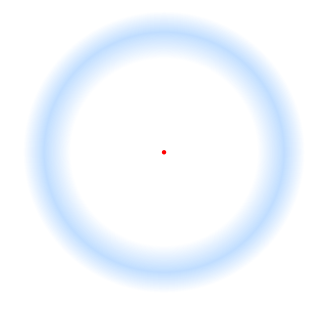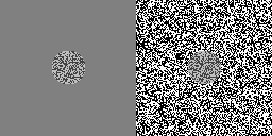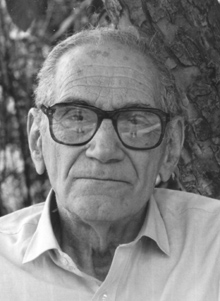
In visual perception, an optical illusion is an illusion caused by the visual system and characterized by a visual percept that arguably appears to differ from reality. Illusions come in a wide variety; their categorization is difficult because the underlying cause is often not clear but a classification proposed by Richard Gregory is useful as an orientation. According to that, there are three main classes: physical, physiological, and cognitive illusions, and in each class there are four kinds: Ambiguities, distortions, paradoxes, and fictions. A classical example for a physical distortion would be the apparent bending of a stick half immerged in water; an example for a physiological paradox is the motion aftereffect. An example for a physiological fiction is an afterimage. Three typical cognitive distortions are the Ponzo, Poggendorff, and Müller-Lyer illusion. Physical illusions are caused by the physical environment, e.g. by the optical properties of water. Physiological illusions arise in the eye or the visual pathway, e.g. from the effects of excessive stimulation of a specific receptor type. Cognitive visual illusions are the result of unconscious inferences and are perhaps those most widely known.
Gestalt psychology, gestaltism, or configurationism is a school of psychology that emerged in the early twentieth century in Austria and Germany as a theory of perception that was a rejection of basic principles of Wilhelm Wundt's and Edward Titchener's elementalist and structuralist psychology.

The Müller-Lyer illusion is an optical illusion consisting of three stylized arrows. When viewers are asked to place a mark on the figure at the midpoint, they tend to place it more towards the "tail" end. The illusion was devised by Franz Carl Müller-Lyer (1857–1916), a German sociologist, in 1889.

The term phi phenomenon is used in a narrow sense for an apparent motion that is observed if two nearby optical stimuli are presented in alternation with a relatively high frequency. In contrast to beta movement, seen at lower frequencies, the stimuli themselves do not appear to move. Instead, a diffuse, amorphous shadowlike something seems to jump in front of the stimuli and occlude them temporarily. This shadow seems to have nearly the color of the background. Max Wertheimer first described this form of apparent movement in his habilitation thesis, published 1912, marking the birth of Gestalt psychology.

The term beta movement is used for the optical illusion of apparent motion in which the very short projection of one figure and a subsequent very short projection of a more or less similar figure in a different location are experienced as one figure moving.

Figure-ground contrast, in the context of map design, is a property of a map in which the map image can be partitioned into a single feature or type of feature that is considered as an object of attention, with the remainder of the map being relegated to the background, outside the current focus of attention. It is thus based on the concept of figure–ground from Gestalt psychology. For example, in a street map with strong figure-ground contrast, the reader would be able to isolate and focus attention on individual features, like a given street, park, or lake, as well as layers of related features, like the street network.

Ambiguous images or reversible figures are visual forms that create ambiguity by exploiting graphical similarities and other properties of visual system interpretation between two or more distinct image forms. These are famous for inducing the phenomenon of multistable perception. Multistable perception is the occurrence of an image being able to provide multiple, although stable, perceptions.

White's illusion is a brightness illusion in which certain stripes of a black-and-white grating are replaced by gray rectangles. Both of the gray bars of A and B have the same color, luminance, and opacity. The brightness of the gray rectangles appears to be closer to the brightness of the top and bottom bordering stripes. This is opposite to any explanation based on lateral inhibition; hence it cannot explain the illusion. A similar illusion occurs when the horizontal stripes have different colors; this is known as the Munker–White illusion or the Munker illusion, based on the Bezold effect.

The Ehrenstein illusion is an optical illusion of brightness or colour perception. The visual phenomena was studied by the German psychologist Walter H. Ehrenstein (1899–1961) who originally wanted to modify the theory behind the Hermann grid illusion. In the discovery of the optical illusion, Ehrenstein found that grating patterns of straight lines that stop at a certain point appear to have a brighter centre, compared to the background.

The Abney effect or the purity-on-hue effect describes the perceived hue shift that occurs when white light is added to a monochromatic light source.

Rubin's vase is a famous example of ambiguous or bi-stable two-dimensional forms developed around 1915 by the Danish psychologist Edgar Rubin.

Illusory contours or subjective contours are visual illusions that evoke the perception of an edge without a luminance or color change across that edge. Illusory brightness and depth ordering often accompany illusory contours. Friedrich Schumann is often credited with the discovery of illusory contours around the beginning of the 20th century, but they are present in art dating to the Middle Ages. Gaetano Kanizsa’s 1976 Scientific American paper marked the resurgence of interest in illusory contours for vision scientists.

In vision, filling-in phenomena are those responsible for the completion of missing information across the physiological blind spot, and across natural and artificial scotomata. There is also evidence for similar mechanisms of completion in normal visual analysis. Classical demonstrations of perceptual filling-in involve filling in at the blind spot in monocular vision, and images stabilized on the retina either by means of special lenses, or under certain conditions of steady fixation. For example, naturally in monocular vision at the physiological blind spot, the percept is not a hole in the visual field, but the content is “filled-in” based on information from the surrounding visual field. When a textured stimulus is presented centered on but extending beyond the region of the blind spot, a continuous texture is perceived. This partially inferred percept is paradoxically considered more reliable than a percept based on external input..

The Chubb illusion is an optical illusion or error in visual perception in which the apparent contrast of an object varies substantially to most viewers depending on its relative contrast to the field on which it is displayed. These visual illusions are of particular interest to researchers because they may provide valuable insights in regard to the workings of human visual systems.
The principles of grouping are a set of principles in psychology, first proposed by Gestalt psychologists to account for the observation that humans naturally perceive objects as organized patterns and objects, a principle known as Prägnanz. Gestalt psychologists argued that these principles exist because the mind has an innate disposition to perceive patterns in the stimulus based on certain rules. These principles are organized into five categories: Proximity, Similarity, Continuity, Closure, and Connectedness.

Neon color spreading is an optical illusion in the category of transparency effects, characterized by fluid borders between the edges of a colored object and the background in the presence of black lines. The illusion was first documented in 1971 and was eventually rediscovered in 1975 by Van Tuijl.

A phantom contour is a type of illusory contour. Most illusory contours are seen in still images, such as the Kanizsa triangle and the Ehrenstein illusion. A phantom contour, however, is perceived in the presence of moving or flickering images with contrast reversal. The rapid, continuous alternation between opposing, but correlated, adjacent images creates the perception of a contour that is not physically present in the still images. Quaid et al. have also authored a PhD thesis on the phantom contour illusion and its spatiotemporal limits which maps out limits and proposes mechanisms for its perception centering around magnocellularly driven visual area MT.

Due to the effect of a spatial context or temporal context, the perceived orientation of a test line or grating pattern can appear tilted away from its physical orientation. The tilt illusion (TI) is the phenomenon that the perceived orientation of a test line or grating is altered by the presence of surrounding lines or grating with a different orientation. And the tilt aftereffect (TAE) is the phenomenon that the perceived orientation is changed after prolonged inspection of another oriented line or grating.

Hans Wallach was a German-American experimental psychologist whose research focused on perception and learning. Although he was trained in the Gestalt psychology tradition, much of his later work explored the adaptability of perceptual systems based on the perceiver's experience, whereas most Gestalt theorists emphasized inherent qualities of stimuli and downplayed the role of experience. Wallach's studies of achromatic surface color laid the groundwork for subsequent theories of lightness constancy, and his work on sound localization elucidated the perceptual processing that underlies stereophonic sound. He was a member of the National Academy of Sciences, a Guggenheim Fellow, and recipient of the Howard Crosby Warren Medal of the Society of Experimental Psychologists.

Amodal completion is the ability to see an entire object despite parts of it being covered by another object in front of it. It is one of the many functions of the visual system which aid in both seeing and understanding objects encountered on an everyday basis. This mechanism allows the world to be perceived as though it is made of coherent wholes. For example, when the sun sets over the horizon it is still perceived as a full circle, despite occlusion causing it to appear as a semi-circle. Another example of this is a cat behind a picket fence. Amodal completion allows the cats to be seen as a full animal continuing behind each picket of the fence. Essentially amodal completion allows for sensory stimulation from any parts of an occluded object we can not directly see.




















